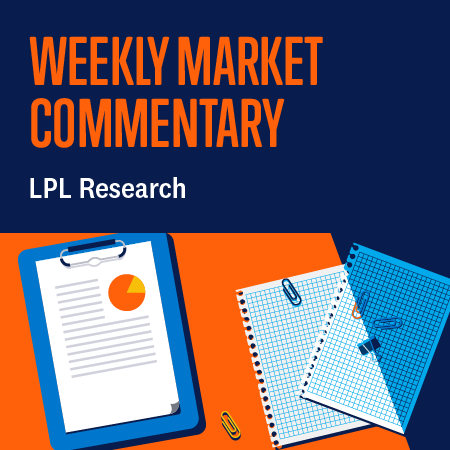As the market appears to be taking a rest and consolidating its $2.7 trillion rally leading up to the Thanksgiving holiday, the historical pattern over the last five years suggests the shortened holiday week typically enjoys modest gains. With concerns over the resiliency of consumer spending, however, the market can be affected by any indication that Black Friday doesn’t witness the throngs of consumers out hunting for bargains, or indications that the start to Cyber Monday won’t result in the billions of dollars that are spent online.
There is nothing like an eight-day winning streak to change the market narrative. Stocks have quickly gone from a correction to a comeback this month, and the S&P 500 is now challenging key resistance at 4,400. While a confirmed breakout above this level raises the odds of the correction being over, there are still a few boxes left to check on our technical list before making that call. One of the unchecked items is market breadth. Despite the recent rally, participation in the latest rebound has been underwhelming, raising questions over the sustainability of the advance. Second, 10-year Treasury yields remain in an uptrend, and until more technical evidence confirms the highs have been set, it may be challenging for stocks to maintain their upside momentum.
It’s been another volatile year for municipal (muni) investors this year. While generally outperforming U.S. Treasuries, the Bloomberg Muni Index is on track for its second calendar year of negative returns—something that has never happened before. But, while volatility will likely persist over the coming months, we think muni investors may be able to catch a break, especially if the Federal Reserve (Fed) is done with its aggressive rate hiking campaign. Moreover, the next few months have historically been favorable for muni investors. So, with still solid fundamentals, the broader muni market may be in for a year-end rally, which would certainly be a nice reprieve for investors suffering from one of the worst muni drawdowns on record.
It’s a tradition here to write about what scares us around Halloween each year. The past few years have offered plenty of material to use in these annual commentaries, but with wars in Israel and Ukraine ongoing, Washington, D.C. dysfunction reaching new heights, the unrelenting rise in interest rates, still-high inflation, unaffordable housing, tight financial conditions, and a Federal Reserve (Fed) that has not yet signaled it’s done hiking rates, the list seems to be a bit longer and scarier than it usually is. But these are risk factors, not our base case. Keep in mind there are plenty of positives at the same time, including easing inflation, the resilient economy bolstered by a healthy job market, growing earnings, and the strong possibility that the Fed is done hiking rates.
Despite headwinds, the U.S. could experience structural changes in the labor market, residential real estate, and inflation as the post-pandemic economy progresses into the New Year. As markets adjust to a new regime, investors should recognize the economy is becoming less interest rate sensitive and they should focus on leading indicators such as the ratio of part-time workers and not on lagging metrics such as the headline growth stats mostly cited in the media.
Earnings season has kicked off with several of the big banks and a handful of other blue-chip companies having already reported results for their calendar third quarters. The key headline this reporting season will be the (likely) end of the earnings recession. The October-November reporting season can be particularly interesting because full-year numbers are nearly locked in while more companies share thoughts on the year ahead. Here are several things we will be watching as reports stream in.
U.S. Treasury yields have seemingly been moving in one direction lately (higher), with the 30-year Treasury yield temporarily breaching 5% for the first time since 2007. The move higher in yields (lower in price) has been unrelenting, with intermediate and longer-term Treasury yields bearing the brunt of the move. There are several reasons we’re seeing higher yields, but rates are moving higher alongside a U.S. economy that has continued to outperform expectations, pushing recession expectations out further, and by the unwinding of rate cut expectations to be more in line with the Federal Reserve’s (Fed) “higher for longer” regime. And with the economic data continuing to show a more resilient economy than originally expected, we think Treasury yields are likely going to stay higher for longer as well. As such, we now project the 10-year Treasury yield will end the year between 4.25% and 4.75% (previously 3.25% and 3.75%).
After a difficult September for stocks, investors are surely ready to flip the calendar to October. That’s the month that kicks off the historically strong fourth quarter. Expecting this pattern to repeat this year is tricky given the overhang of a government shutdown, interest rates near 16-year highs, a market still trying to digest the Federal Reserve’s “higher for longer” message, and a consumer who is facing some stiff headwinds as excess savings are drawn down, student loan payments restart, and the effects of higher borrowing costs are increasingly felt. Amid that complicated backdrop, here we assess prospects for a fourth-quarter rally.
India has emerged as a compelling economic growth story and an increasingly attractive alternative to China within the emerging markets complex. A growing population with a robust and young workforce, significant infrastructure spending, and an ongoing digital transformation have been key catalysts to India’s outperformance over China. India has also benefited from the de-globalization trend as manufacturers move production away from China. While we may not go as far as officially calling India the new China, the economic and technical trends suggest the country may be set for a prolonged period of outperformance.
Recent data suggests economic conditions in Europe are deteriorating, removing a key element of LPL Research’s positive view of the attractively valued developed international equities asset class. Previous U.S. dollar weakness and strong earnings momentum, which were other key reasons why we became more interested in European investing earlier this year, have reversed and suggest looking elsewhere for investment opportunities. Another international market to consider is Japan, which is also attractively valued with better fundamentals than Europe, in our view.
The BRIC acronym, without the “S,” was introduced in 2001 by the Goldman Sachs chief economist who highlighted the prodigious growth and investment prospects of Brazil, Russia, India, and China combined. In 2009, Russia advanced the BRIC platform to create an informal bloc that could challenge the dominance of Western nations, particularly the United States. In 2010, South Africa joined and became the “S” in the BRICS lexicon. The original bloc, an informal economic alliance, comprises approximately 45% of the global supply chain for commodities, including industrial, precious, and agricultural products. In terms of contribution to global GDP, the BRICS constitute 31%, with expectations for a more expanded share as the new BRICS+ entrants are installed in 2024. The bloc has been characterized as the “commodity powerhouse of the world,” and that title will only strengthen with additional members.
Fixed income investors have had a rough time over the last few years. Normally a staid asset class, core bonds (as proxied by the Bloomberg Aggregate Bond Index) have seen negative returns over the last two calendar years and could potentially see negative returns for a third straight year—something that has never happened in the history of the core bond index (since 1975). But, despite the rapid rise in interest rates (fall in bond prices), there’s no reason to believe that we are in the beginning of a sustained bear market. Just because yields fell for many years doesn’t mean that they have to keep rising. In fact, at current levels, after years of artificially suppressed levels, long-term yields are back within longer-term ranges. And with inflation trending in the right direction and the Federal Reserve (Fed) near (at?) the end of its rate hiking campaign, we think the big move in long-term rates has already happened and interest rates are finally back to normal.


